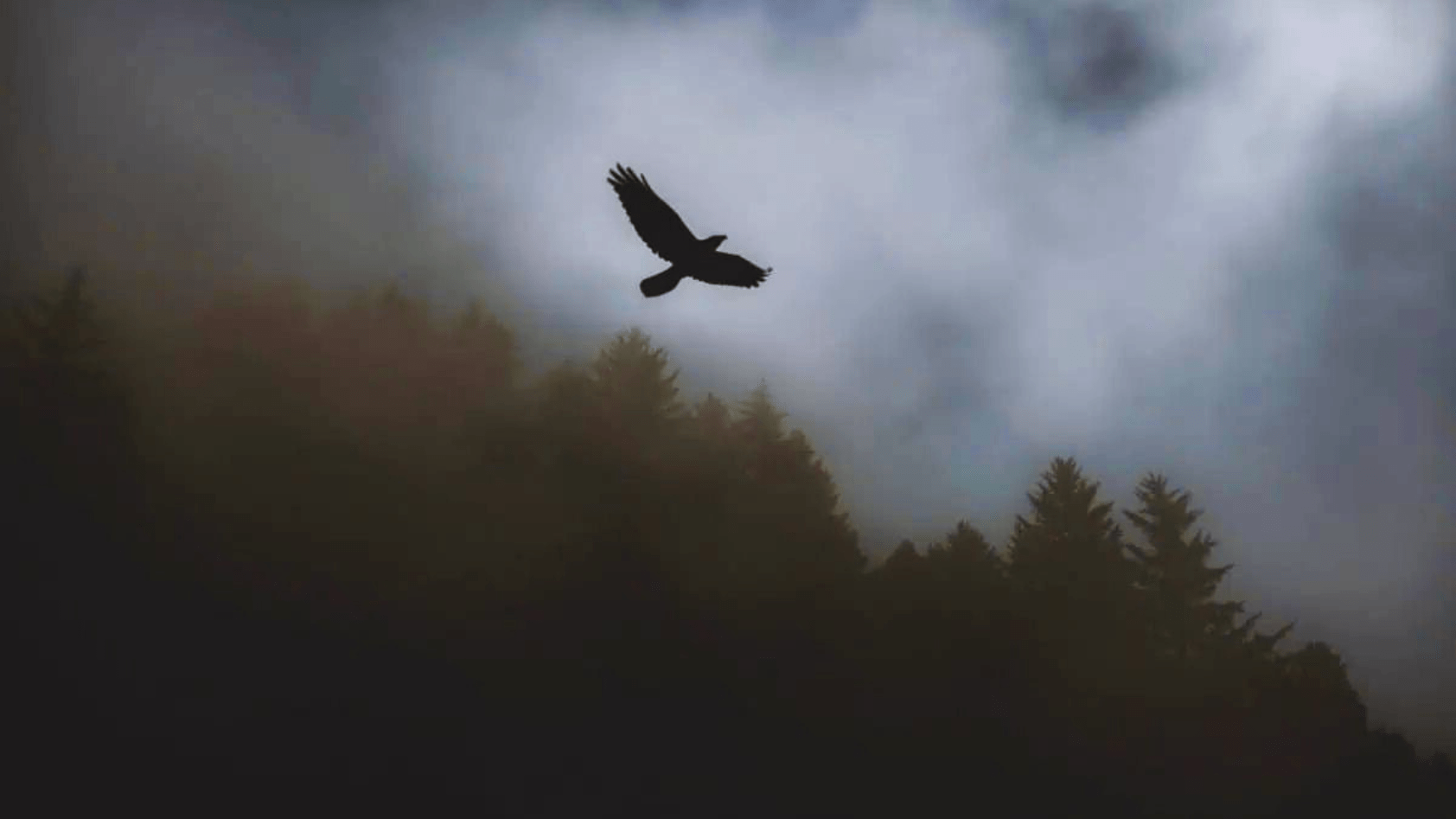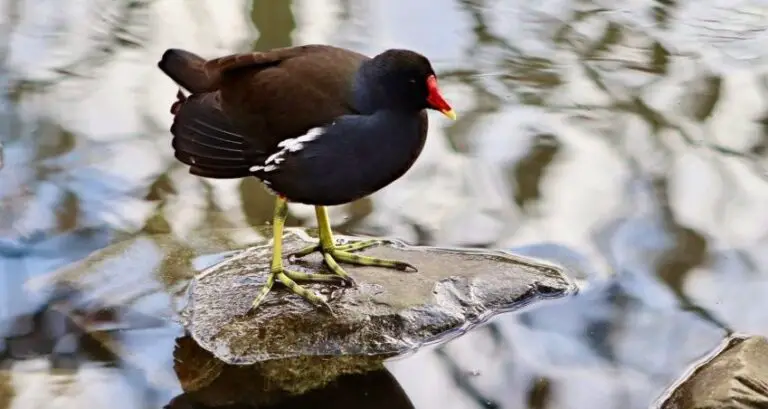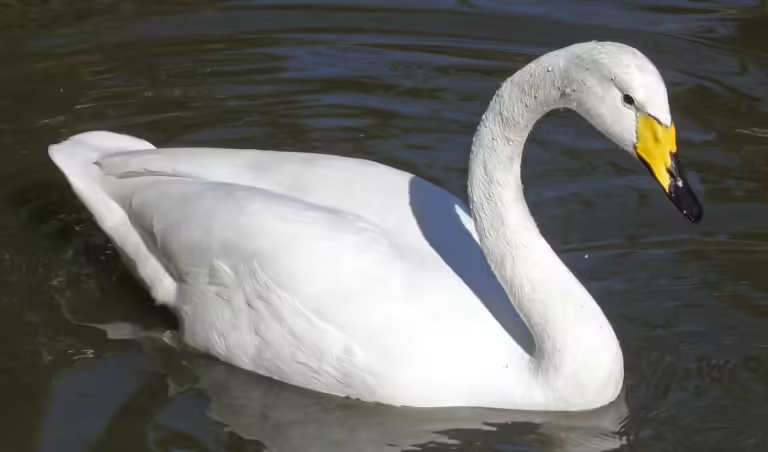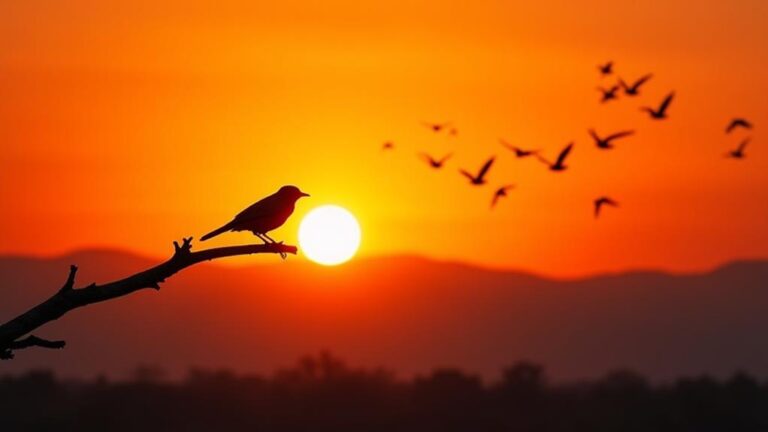Do you ever wonder what birds get up to when the sun goes down? Are they tucked away in their nests, fast asleep like us? Or do they take flight and explore the darkness of the night sky?
In this article, we will delve into the fascinating world of nocturnal avian activities to answer the question: Do birds fly at night? Prepare to be amazed as we uncover the adaptations, migration patterns, feeding habits, courtship behaviors, nesting habits, and roosting tendencies of these extraordinary creatures.
From the mysterious owls to the elusive nightjars, we will explore the diverse species of nocturnal birds found around the world. Additionally, we will address the conservation challenges they face and discuss the research and monitoring techniques used to study them.
So grab your binoculars and join us on this nocturnal birdwatching journey to unravel the secrets of the night sky.
Key Takeaways
- Nocturnal birds possess adaptations for thriving in the darkness of night, including large eyes with a high number of light-sensitive cells called rods and a reflective layer in their eyes called the tapetum lucidum, enhancing their night vision.
- Nocturnal migration is still being studied, but some birds undertake long migrations, navigate using celestial cues and landmarks, and often fly at high altitudes in large flocks for safety and to find resources.
- Nocturnal birds use their exceptional night vision and acute hearing to locate prey, and their hunting techniques include ‘hawking’ and ‘stooping’.
- Courtship and mating in nocturnal birds involve vibrant plumage displays by males, evaluation of potential mates by females based on displays and songs, melodious songs to serenade potential partners, and unique courtship rituals such as dances, aerial acrobatics, and nest-building rituals.
The Adaptations of Nocturnal Birds
Nocturnal birds have developed remarkable adaptations to thrive in the darkness of the night. These feathered creatures possess unique features that enable them to navigate and hunt efficiently during the nighttime hours.
One of their most notable adaptations is their exceptional eyesight. Nocturnal birds have large eyes that are highly sensitive to low light conditions. Their eyes are equipped with a higher number of light-sensitive cells called rods, which allow them to see clearly even in the dimmest of environments. Additionally, their eyes have a reflective layer called the tapetum lucidum, which enhances their night vision by reflecting available light back through the retina.
Another adaptation of nocturnal birds is their acute hearing. Their ears are designed to pick up the faintest sounds of prey rustling in the dark. Their auditory system is finely tuned to detect high-frequency sounds, enabling them to locate their targets with precision. Along with their exceptional eyesight and hearing, these birds also possess a keen sense of smell. This olfactory ability aids them in finding food sources and avoiding potential predators.
Moreover, nocturnal birds have evolved specialized feathers that enable silent flight. These feathers have fringed edges that reduce turbulence and muffle the sound of their wingbeats, allowing them to move stealthily through the night sky. This adaptation gives them a significant advantage when hunting, as their prey remains unaware of their presence until it’s too late.
In conclusion, the adaptations of nocturnal birds are truly remarkable. Their exceptional eyesight, acute hearing, keen sense of smell, and specialized feathers all contribute to their ability to thrive in the darkness of the night. These adaptations ensure their survival and make them efficient predators in their nocturnal habitats.
Nocturnal Migration Patterns
When the sun goes down, some feathered creatures take to the skies, embarking on a mysterious journey under the cover of darkness. Scientists are still researching nocturnal migration patterns, which are an intriguing aspect of bird behavior. Here are some interesting facts about this phenomenon:
- Some birds, such as the Northern Wheatear, undertake incredibly long migrations, covering thousands of miles in a single journey.
- Nocturnal migrants navigate by using a combination of celestial cues, such as the stars and the moon, as well as landmarks on the ground.
- These birds often fly at extremely high altitudes, sometimes reaching heights of over 20,000 feet.
- Many nocturnal migrants travel in large flocks, which helps to provide safety in numbers and makes it easier to find food and shelter along the way.
- Some species of birds, like the Blackpoll Warbler, undergo a remarkable transformation before embarking on their nocturnal migration. They fatten up and grow extra flight feathers to prepare for the long journey ahead.
The study of nocturnal migration patterns is still a relatively new field, and researchers are constantly uncovering new information about the incredible abilities and behaviors of these nighttime travelers.
Feeding Habits After Dark
When it comes to feeding habits after dark, birds have developed unique hunting techniques. They rely on their exceptional night vision and acute hearing to locate their prey in the darkness.
Additionally, some bird species have specialized diets that allow them to thrive in the nocturnal environment.
Hunting Techniques
You’ll be amazed by the hunting techniques birds use at night! When the sun goes down and darkness envelopes the sky, birds have adapted unique strategies to catch their prey.
One common technique is called ‘hawking,’ where birds such as owls and nightjars fly silently through the night, scanning the ground below for any movement. They rely on their exceptional hearing and night vision to locate insects or small mammals scurrying about. Once their prey is spotted, they silently swoop down, using their sharp talons to snatch their unsuspecting victims.
Another hunting method is called ‘stooping,’ which is often used by birds of prey like the barn owl. They soar high above, scanning the ground for any signs of movement. When they spot their target, they dive at incredible speeds, striking with deadly accuracy.
These hunting techniques showcase the remarkable adaptability and resourcefulness of birds as they conquer the challenges of the nocturnal world.
Specialized Diets
Get ready to dive into the fascinating world of specialized diets that certain birds have developed!
When it comes to feeding, birds have evolved incredible adaptations to target specific food sources. One such example is the hummingbird, which has a unique diet consisting mainly of nectar from flowers. With their long, slender bills and specialized tongues, hummingbirds are able to reach deep into the flowers and extract the sweet nectar.
Another bird with a specialized diet is the flamingo. These graceful creatures have a diet primarily composed of algae and other small aquatic organisms. Their uniquely shaped bills allow them to filter out the tiny organisms from the water, leaving behind only the nutritious particles.
From nectar-feeders to filter-feeders, the variety of specialized diets in the avian world is truly remarkable.
Courtship and Mating Behaviors
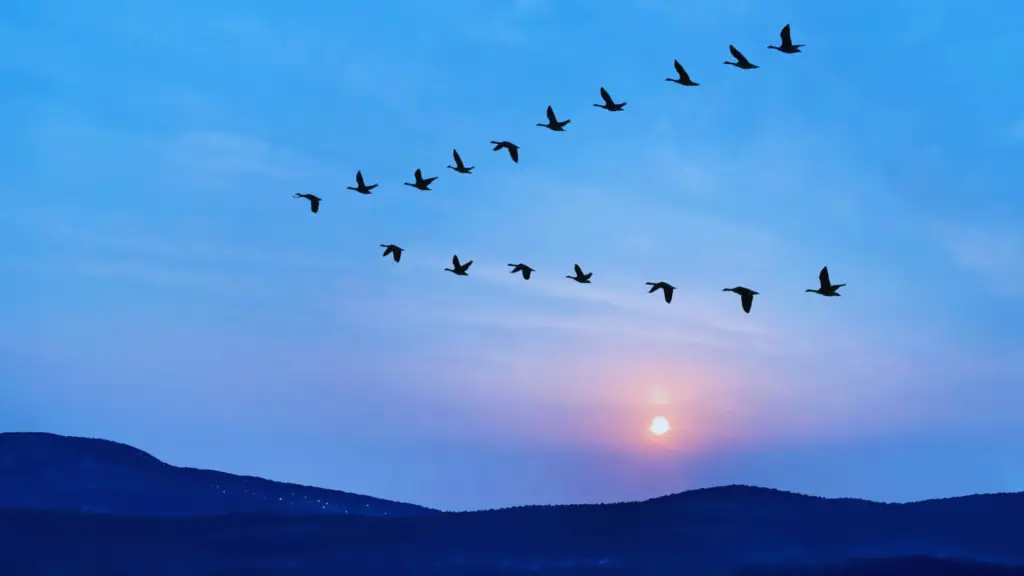
Experience the enchanting dance of courtship and witness the magical moments of avian love under the moonlit sky. As the sun sets and darkness falls, birds come alive with vibrant displays to attract mates and ensure reproductive success.
- Flirting with Feathers:
- Male birds boast their vibrant plumage, showcasing their genetic fitness and ability to provide for a family.
- Females, on the other hand, carefully evaluate potential suitors, seeking out the most impressive displays and melodious songs.
- Serenades in the Night:
- Birds use their melodious voices to serenade potential partners, filling the air with captivating melodies.
- Each species has its unique song, serving as a distinctive identifier and a testament to their individuality.
The courtship rituals are not limited to visual displays and enchanting songs alone. Birds engage in intricate dances, aerial acrobatics, and mesmerizing displays of affection to establish strong bonds with their chosen mates. These displays may include synchronized flight patterns, elaborate nest-building rituals, or even exchanging special gifts like twigs or food.
The moonlit sky provides the perfect backdrop for these romantic encounters, adding an ethereal touch to the avian courtship rituals. So next time you find yourself outside on a clear, moonlit night, take a moment to listen to the symphony of avian love and appreciate the captivating beauty of courtship in the avian world.
Nesting and Roosting Habits
When it comes to nesting and roosting habits, it’s important to choose safe and hidden locations for your bird family. This will help protect your eggs and chicks from predators. By finding a secure spot, you can ensure the safety and well-being of your feathered friends.
Choosing Safe and Hidden Locations
Birds often seek out safe and hidden locations to roost and rest during the night. They do this to protect themselves from predators and harsh weather conditions. Here are two reasons why birds choose these locations:
Protection from predators:
- Birds choose safe and hidden locations to minimize the risk of being attacked by predators such as owls, raccoons, and snakes.
- These locations provide cover and make it difficult for predators to spot them, increasing their chances of survival.
Protection from harsh weather:
- Safe and hidden locations offer shelter from strong winds, heavy rain, and extreme temperatures.
- Birds can find refuge in dense vegetation, tree cavities, or even man-made structures like birdhouses.
By selecting these secure and secluded spots, birds ensure a peaceful and undisturbed rest throughout the night, enabling them to recharge and prepare for the activities of the following day.
Protecting Eggs and Chicks from Predators
To protect your eggs and chicks from predators, it’s important to choose secure and hidden nest locations. Birds are clever when it comes to selecting safe spots for their nests. They often opt for dense foliage or hard-to-reach areas, such as tree cavities or cliff ledges.
By positioning their nests in these secluded spots, birds make it difficult for predators to locate and reach their precious eggs and vulnerable chicks. Additionally, some bird species build their nests near thorny bushes or prickly plants to create an extra layer of protection.
This prickly barrier not only deters predators but also provides a physical barrier that helps shield the nest from potential harm. By carefully selecting a safe and hidden location for your nest, you can greatly improve the chances of successfully raising your offspring.
The Role of Artificial Light
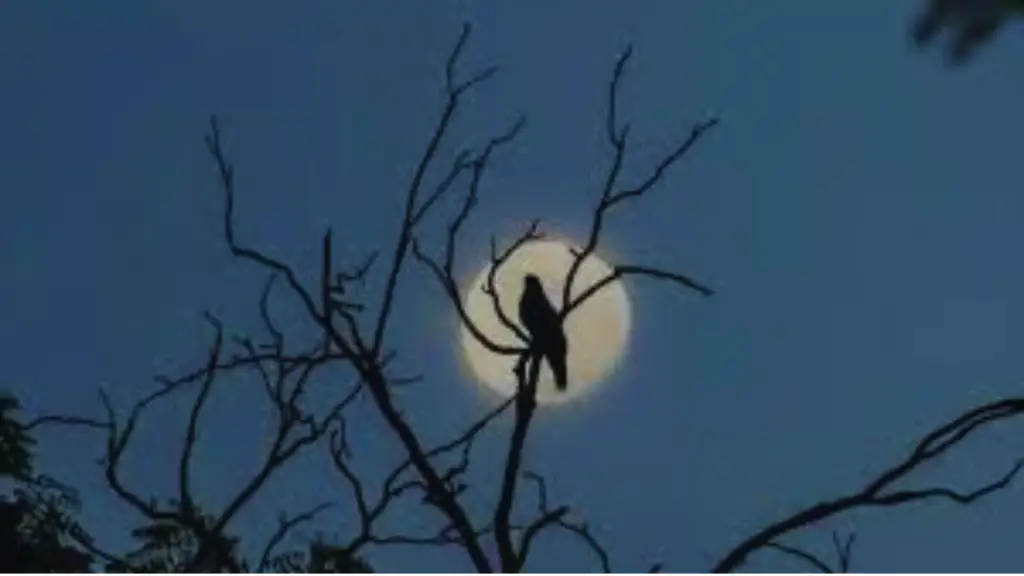
Artificial light affects the behavior of nocturnal birds, with studies showing that a staggering 80% of urban bird species are affected by light pollution. The increased presence of artificial light at night disrupts the natural rhythms of these birds, leading to various negative impacts on their survival and reproductive success.
One of the main effects of artificial light on nocturnal birds is the disruption of their feeding patterns. Many species rely on the darkness of night to forage for food, but the presence of artificial light can cause them to become disoriented and unable to find their prey. This can lead to reduced food intake and ultimately affect their overall health and fitness.
Additionally, artificial light can interfere with the nesting behaviors of nocturnal birds. Some species build their nests in areas that are away from light sources to protect their eggs and chicks from predators. However, the presence of artificial light can attract predators, increasing the risk of predation on the nests.
To better understand the impact of artificial light on nocturnal birds, researchers have conducted studies to observe their behavior in different light conditions. The table below summarizes some of the findings from these studies:
| Light Condition | Bird Behavior |
|---|---|
| No Artificial Light | Normal foraging and nesting behavior |
| Low Levels of Artificial Light | Slight disruption in foraging and nesting behavior |
| High Levels of Artificial Light | Significant disruption in foraging and nesting behavior |
In conclusion, artificial light has a significant impact on the behavior of nocturnal birds. It disrupts their feeding patterns and nesting behaviors, which can have negative consequences for their survival and reproductive success. It is important to consider the effects of light pollution and take measures to minimize its impact on these birds and their habitats.
Nocturnal Bird Species Around the World
Imagine yourself venturing into the darkness, where a hidden world of mysterious creatures comes to life under the cover of night. Among these creatures are the nocturnal bird species that inhabit different parts of the world. Here are three fascinating examples:
- The Tawny Frogmouth: This unique bird, native to Australia, is often mistaken for an owl due to its similar appearance. It hunts at night by sitting still on a branch, camouflaged among the trees. With its wide, frog-like mouth, it catches insects, small mammals, and even small birds.
- The Nightjar: Found in various regions across the globe, including Europe, Africa, and the Americas, the nightjar is known for its distinct call, which resembles the sound of a spinning coin. These birds have excellent night vision and feed on insects, catching them mid-flight with their wide mouths.
- The Kakapo: Endemic to New Zealand, the kakapo is a critically endangered parrot species. These flightless birds are nocturnal and spend their nights foraging for leaves, fruits, and seeds. Their distinctive booming call echoes through the forests, making them one of the most unique nocturnal bird species in the world.
As you explore the world of nocturnal bird species, you’ll discover the incredible adaptations and behaviors that allow them to thrive in the darkness. From silent hunters to peculiar calls, these birds add an air of mystery and enchantment to the nighttime world.
Conservation Challenges and Solutions
Conservation efforts face monumental challenges in protecting the endangered nocturnal bird species from extinction. As these birds are active at night, it becomes even more difficult for conservationists to monitor and protect them. The primary threats to these species include habitat loss, climate change, light pollution, and predation by introduced species.
To address these challenges, conservationists are implementing various solutions. One approach is to establish protected areas specifically designed for nocturnal bird species, ensuring the preservation of their unique habitats. Additionally, efforts are being made to reduce light pollution by implementing lighting regulations and raising awareness about its negative impacts on nocturnal birds. Conservationists are also working to restore and create suitable habitats for these birds, such as planting native vegetation and providing artificial nesting sites. Lastly, captive breeding and reintroduction programs are being utilized to increase the population of endangered species.
Despite these efforts, the conservation challenges are immense. To better understand the severity of the situation, consider the following table:
| Conservation Challenges | Impacts | Solutions |
|---|---|---|
| Habitat loss | Decreased available space for birds | Establish protected areas |
| Climate change | Altered migration patterns and food availability | Reduce greenhouse gas emissions |
| Light pollution | Disrupts natural behavior and navigation | Implement lighting regulations |
| Predation by introduced species | Increased risk of predation | Control invasive species |
By addressing these challenges and implementing effective solutions, we can work towards preserving the unique and valuable nocturnal bird species for future generations.
Research and Monitoring Techniques
If you’re interested in studying nocturnal bird behavior, there are a few key techniques you can use.
One method is using acoustic monitoring devices. These devices can help you record and analyze the vocalizations of birds at night. They can provide valuable insights into the behavior and communication patterns of nocturnal avian species.
Studying Nocturnal Bird Behavior
Explore the fascinating world of studying nocturnal bird behavior and discover the awe-inspiring activities these winged creatures engage in during the night.
- Witness the enchanting dance of mating rituals as male birds sing and display their feathers in vibrant moonlit performances, captivating potential mates.
- Experience the thrill of observing nocturnal migration, as millions of birds take to the skies, navigating by starlight and celestial cues, embarking on epic journeys across vast distances.
- Marvel at the intricate nest-building process, as nocturnal birds skillfully construct their homes under the cover of darkness, utilizing materials like leaves, twigs, and feathers to create safe havens for their young.
- Be amazed by the unique foraging techniques of nocturnal birds, using their keen senses and specialized adaptations to locate and capture prey in the dimly lit night, showcasing their exceptional hunting skills.
Delve into the realm of nocturnal bird behavior and unlock the mysteries of their captivating nighttime world.
Using Acoustic Monitoring Devices
Immerse yourself in the mesmerizing realm of nocturnal bird behavior by utilizing acoustic monitoring devices. You’ll be astounded by the symphony of sounds that fill the air, transporting you to a world of enchantment and wonder.
These devices have revolutionized the study of nocturnal avian activities. They allow researchers to capture and analyze the complex vocalizations of nighttime birds. By placing these devices strategically in various habitats, scientists can gather valuable data on the behavior, communication, and migration patterns of these elusive creatures.
With the help of advanced technology, we can now identify different species based on their unique calls and monitor their movements throughout the night. This invaluable information not only enhances our understanding of nocturnal bird behavior but also contributes to the conservation and preservation of their habitats.
So, grab your acoustic monitoring device and embark on a captivating journey into the nocturnal world of birds.
Tips for Birdwatching at Night
Bring your binoculars and flashlight, as you’ll need them to spot the elusive night-time birds during your nocturnal birdwatching adventure. Birdwatching at night can be an exciting and rewarding experience, but it requires some special techniques and equipment. Here are some tips to help you make the most of your nocturnal birdwatching:
- Choose the right location: Look for areas with dense vegetation, such as forests or wetlands, as these are often favored by nocturnal birds. These areas provide shelter and food sources for them.
- Use your ears: Since it can be difficult to see birds in the dark, rely on your hearing. Listen for unique calls and songs that nocturnal birds make. Acoustic monitoring devices can be helpful in detecting and identifying these sounds.
- Be patient and still: Nocturnal birds are often more timid and easily disturbed than their daytime counterparts. Find a comfortable spot, sit quietly, and wait for the birds to come to you.
| TIP | DESCRIPTION |
|---|---|
| Choose the right location | Look for areas with dense vegetation, such as forests or wetlands, as nocturnal birds frequently prefer these. |
| Use your ears | Listen for unique calls and songs that nocturnal birds make. Acoustic monitoring devices can be helpful in detecting and identifying these sounds. |
| Be patient and still | Find a comfortable spot, sit quietly, and wait for the birds to come to you. |
FAQs About Do Birds Fly At Night
What are the physical characteristics of nocturnal birds that enable them to navigate and hunt in the dark?
Nocturnal birds have physical characteristics that enable them to navigate and hunt in the dark. These include enhanced night vision, acute hearing, and specialized feathers for silent flight.
How do nocturnal birds migrate at night and what factors influence their migration patterns?
Nocturnal birds migrate at night, using their exceptional navigation skills and relying on celestial cues, such as stars or the Earth’s magnetic field. Factors like food availability, weather conditions, and breeding cycles influence their migration patterns.
What types of food do nocturnal birds feed on after dark and how do they locate their prey?
Nocturnal birds, like owls and nightjars, feed on a variety of prey after dark. They use their exceptional hearing and vision to locate their prey, swooping down with stealth and precision.
What are the unique courtship and mating behaviors displayed by nocturnal bird species?
Nocturnal bird species display unique courtship and mating behaviors. They engage in elaborate dances, vocalizations, and displays to attract mates. These behaviors are often performed during the night to maximize their chances of finding a partner.
What are the different nesting and roosting habits of nocturnal birds and how do they choose their nesting sites?
Nesting and roosting habits of nocturnal birds vary, as they carefully choose their sites. Some seek shelter in tree cavities, while others build nests on the ground. Their selection depends on safety, resources, and camouflage.
Conclusion
As you delve into the mysterious world of nocturnal birds, you discover a hidden realm filled with adaptations and behaviors that come alive under the cover of darkness.
Like stars twinkling in the night sky, these birds navigate through the shadows, their wings slicing through the air with grace and purpose.
They migrate, feed, court, and nest, all while most of the world sleeps.
Through conservation efforts and research, we can illuminate their world and ensure that these captivating creatures continue to dance through the night, enchanting us with their nocturnal symphony.

